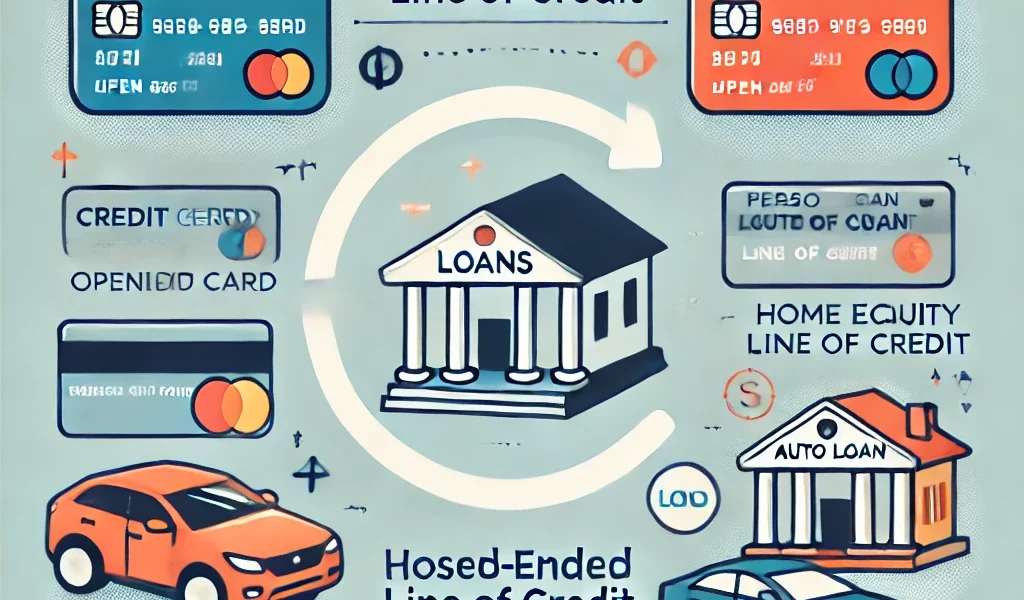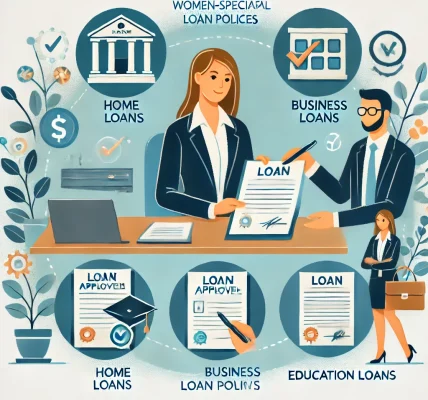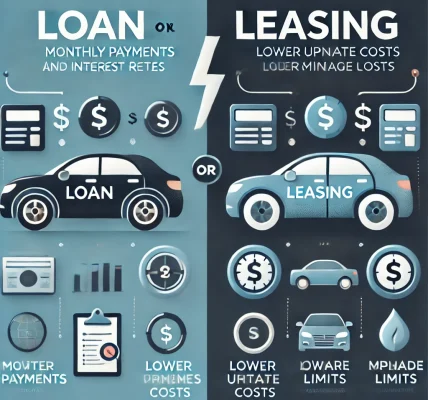Introduction
Loans play a crucial role in personal and business financing. Borrowers can access funds for various purposes, from purchasing a home to funding a business expansion. Understanding different loan structures is essential to making informed financial decisions. Two primary categories of loans are open-ended loans and closed-ended loans.
In this guide, we will explore how these loan types work, their key differences, advantages, and considerations for choosing the right one for your financial needs.
What Are Open-Ended Loans?
An open-ended loan is a type of credit that allows borrowers to withdraw funds multiple times up to a predefined credit limit. As the borrower repays the borrowed amount, the available credit is replenished, enabling continuous access to funds.
Key Features of Open-Ended Loans:
- Revolving Credit: Borrowers can use the funds repeatedly, provided they do not exceed the credit limit.
- Flexible Repayment: Minimum monthly payments are required, but borrowers can choose to pay more.
- Interest Charges: Interest is typically charged only on the amount borrowed.
- No Fixed Loan Term: The loan remains open as long as the borrower meets repayment obligations.
Examples of Open-Ended Loans:
- Credit Cards: Users can borrow, repay, and borrow again within the available limit.
- Home Equity Line of Credit (HELOC): Homeowners can withdraw funds as needed against the equity of their property.
- Personal Lines of Credit: A flexible borrowing option for various personal financial needs.
What Are Closed-Ended Loans?
A closed-ended loan is a loan with a fixed amount borrowed, which must be repaid in scheduled payments over a predetermined period. Once repaid, the loan account is closed, and borrowers must apply for a new loan if they need additional funds.
Key Features of Closed-Ended Loans:
- Fixed Loan Amount: Borrowers receive a lump sum upfront.
- Structured Repayment Plan: Fixed monthly installments with a set loan term.
- Interest Charges: Interest is applied to the total loan amount.
- No Reuse: Once repaid, borrowers must apply for a new loan for additional funding.
Examples of Closed-Ended Loans:
- Mortgages: Loans used to purchase homes with structured repayments.
- Auto Loans: Fixed-term loans for vehicle purchases.
- Personal Loans: Lump-sum loans for various personal financial needs.
- Student Loans: Loans designed to cover education-related expenses.
Key Differences Between Open-Ended and Closed-Ended Loans
| Feature | Open-Ended Loans | Closed-Ended Loans |
|---|---|---|
| Fund Usage | Reusable credit up to a limit | Fixed loan amount disbursed once |
| Repayment Flexibility | Flexible, revolving credit | Fixed payments over a set period |
| Interest Charges | Charged only on the borrowed amount | Charged on the total loan amount |
| Loan Term | No fixed end date (as long as payments are made) | Defined loan term with an end date |
| Examples | Credit Cards, HELOC, Personal Lines of Credit | Mortgages, Auto Loans, Personal Loans |
Pros and Cons of Open-Ended Loans
✅ Advantages:
- Continuous access to credit without reapplying.
- Flexible repayment structure.
- Ideal for unpredictable expenses.
❌ Disadvantages:
- Higher interest rates compared to some closed-ended loans.
- Risk of accumulating high debt due to flexible borrowing.
- May require collateral (e.g., HELOC).
Pros and Cons of Closed-Ended Loans
✅ Advantages:
- Predictable monthly payments help with budgeting.
- Typically lower interest rates compared to open-ended loans.
- Suitable for significant purchases like homes or cars.
❌ Disadvantages:
- No access to additional funds without reapplying.
- Fixed payments may be burdensome in case of financial instability.
- Prepayment penalties may apply in some cases.
How to Choose Between Open-Ended and Closed-Ended Loans
Choosing the right loan type depends on your financial needs, repayment ability, and loan purpose. Here are key considerations:
- Need for Ongoing Access to Funds: If you require continuous credit access, an open-ended loan is more suitable.
- Budget Stability: If you prefer predictable monthly payments, a closed-ended loan is ideal.
- Loan Purpose: Open-ended loans work well for short-term and flexible expenses, while closed-ended loans are better for long-term investments.
- Interest Rate Comparison: Evaluate interest rates and fees before deciding.
- Repayment Discipline: Open-ended loans require disciplined repayment to avoid excessive debt accumulation.
Final Thoughts
Understanding the differences between open-ended and closed-ended loans is essential for making informed financial decisions. Each type has its benefits and potential drawbacks, so borrowers should assess their needs before choosing the most suitable option.




